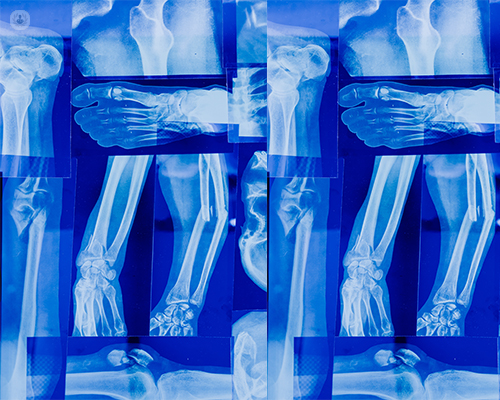Non-union fracture
Mr Medhat Zekry - Orthopaedic surgery
Created on: 12-04-2020
Updated on: 05-24-2023
Edited by: Sophie Kennedy
What exactly are non-union fractures?
Non-union fractures, also referred to as non-unions or non-healing fractures, are broken bones (i.e. fractures) that have not healed properly or that have not fully healed within the expected time frame.

After what period of time is it generally considered to be a non-union fracture?
Generally, the possibility of a non-union fracture is considered in the event that there is little or no sign of the broken bone healing after anywhere between six to nine months after the initial fracture occurred.
What are the main causes of non-union fractures?
There are four main causes of non-union fractures. They include the following:
- insufficient blood supply to the fractured bone
- infection at the site of the bone fracture
- the ends of the bone separating either during or after surgery
- insufficient or inadequate surgical stabilisation of the fractured bone
What are the main symptoms of non-union fractures?
There are a whole host of symptoms that patients with non-union fractures will typically present with. The main ones include:
- pain
- swelling
- difficulty bearing weight
- bone tenderness
- bone instability
- limb deformity
- joint deformity
Where in the body do non-union fractures most commonly occur?
Non-union fractures can, in fact, occur in every bone of the human body. The most common parts of the body where they are most commonly seen, however, include the tibia, the humerus, the talus, as well as the fifth metatarsal bone.
What are the main risk factors that increase one's chances of sustaining a non-union fracture?
There are certain risk factors that increase the risk of a non-union fracture, including:
- old age
- anaemia
- diabetes
- high blood pressure (hypertension)
- poor nutrition
- infection
- if the fracture is very complex and severe
Which specialist treats non-union fractures?
Orthopaedic surgeons are the specialists that treat non-union fractures.

